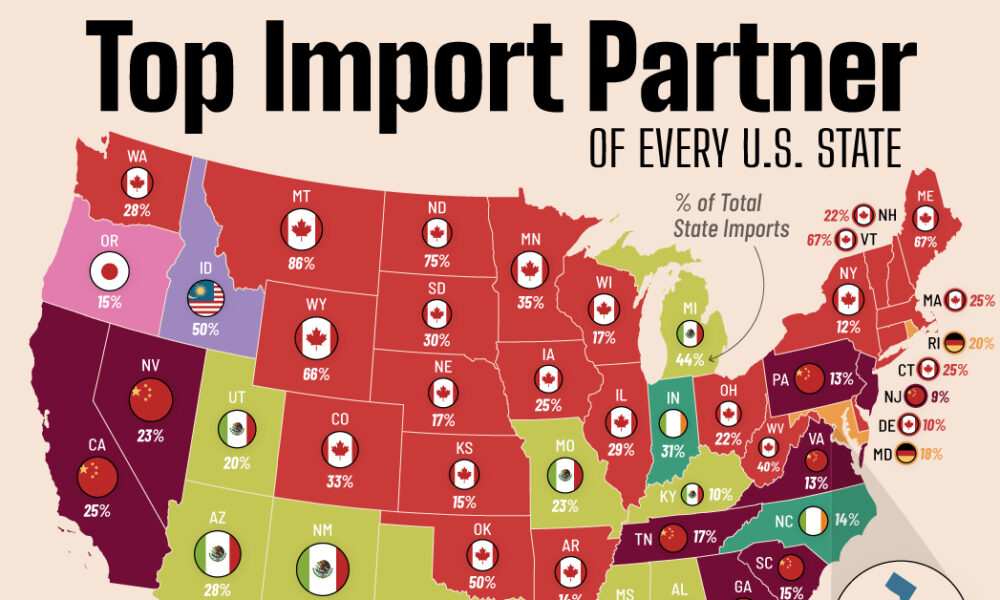How are we so befuddled at U.S. tariffs, when it’s all been so obvious?
John Turley-Ewart
Special to The Globe and Mail
Published Yesterday
For Subscribers
John Turley-Ewart is a regulatory compliance consultant and Canadian banking historian.
When this period in our country’s history is written, Canada’s initial response to U.S. tariffs – shock, talk and awe for tit-for-tat retaliatory trade rules – will measure the complacency with which we have managed trade relations. Our leaders were blind to the dynamics driving efforts by many Americans to upend the global trading system. To paraphrase James Carville: It’s their economy, stupid.
Why this U.S. administration applauds tariffs should not be a secret. U.S. President Donald Trump’s chief economist, Stephen Miran, a Harvard-trained PhD and hedge fund strategist nominated to chair the President’s Council of Economic Advisers, wrote in November “
A User’s Guide to Restructuring the Global Trading System.”
He asserts that, “The deep unhappiness with the prevailing economic order is noted in persistent overvaluation of the [U.S.] dollar and asymmetric trade conditions. Such overvaluation makes U.S. exports less competitive, U.S. imports cheaper, and handicaps American manufacturing.” For Mr. Miran, tariffs can mitigate the consequences of the U.S. dollar’s reserve currency status and the openness of U.S. markets (millions of jobs losses among the working classes and blighted communities across America).
To be sure, tariffs would likely see the value of our dollar versus the U.S. dollar drop, as more expensive Canadian exports result in lower demand. This makes the greenback even more overvalued, exacerbating the problem Mr. Miran sees in the first place. And ultimately tariffs would bring inflation, Canadian leaders say. American consumers will revolt.
Mr. Miran’s answer to that is twofold. He’d introduce reduced U.S. corporate taxation, extensive deregulation as means of supporting U.S. exports despite a higher U.S. dollar. And, in his view, the higher U.S. dollar would give American consumers the additional purchasing power to absorb some of the tariff cost without stoking too much U.S. inflation.
Will a higher U.S. dollar completely nullify the higher prices that tariffs cause? Probably not. If it does, then there would be no impact on demand for Canadian exports, and thus there would be no higher U.S. dollar in the first place.
But ultimately, doubling down on the higher U.S. dollar, turning a previously unwanted situation into the solution, is precisely the goal. In Mr. Miran’s view, the United States, which gets additional revenue from the tariffs, can take whatever hit that results, and its trading partners, with a battered currency, can’t.
Tariffs are thus a means to increase “burden sharing” among liberal democracies protected by the U.S. security umbrella and to level trading relationships when partners have better access to U.S. markets than the U.S. has to theirs.
Mr. Miran wants tariffs to cause “currency adjustments.” This is a polite term for crushing the currencies of trading partners that don’t come to the table and offer to “burden share” while opening trade agreements to be more favourable to U.S. job creation. This is why, Mr. Miran says, “tariffs are ultimately financed by the tariffed nation, whose real purchasing power and wealth decline.”
He points to the 2018-19 tariffs the first Trump administration imposed on China (and the Biden administration retained) as proof his theory has merit and that it “should inform analysis of future trade conflicts.” In that case the Chinese currency fell, the U.S. dollar strengthened, and the trade deficit remained. But the important thing is that inflation was manageable, China got the message, and new revenue was raised for the U.S. Treasury, according to Mr. Miran.
We will need to come to terms with the fact that the U.S. will assess its relationship with us based on a criteria matrix that includes, as Mr. Miran suggests, if Canada “opens its markets to U.S. firms in the same way America opens its markets to foreign firms operating stateside.”
This has implications for Canadian agricultural supply management, the telecom sector, restrictions on investments, service barriers to online streaming and barriers to digital trade such as the digital service tax.
Importantly, Canadian leaders will urgently need to make the case to the U.S Administration that a “beggar thy neighbour” trade policy with Canada – which a U.S. tariff policy is – undermines Canada’s ability to “burden share” the security umbrella and support U.S. efforts to re-shore manufacturing by crippling the buying power of America’s largest export market.
There is a purpose and method behind the U.S. effort to restructure global trading systems. Understanding that purpose presents the quickest path to picking the best tools to defend Canada while preserving the best elements of our trading relationship with the U.S.

www.ctvnews.ca






